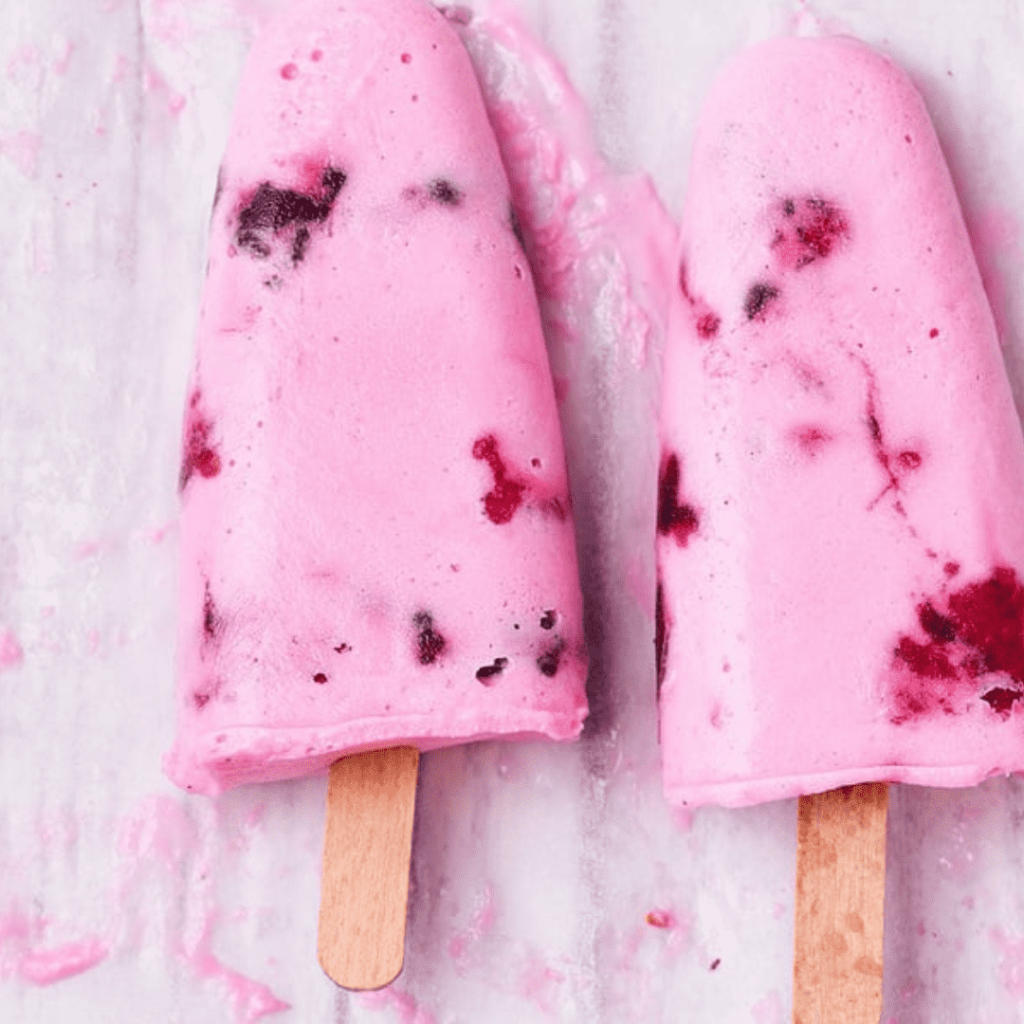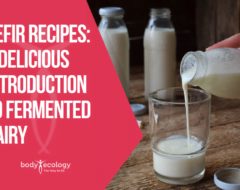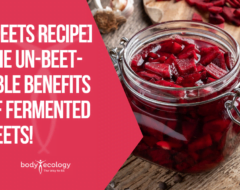Refreshing Kefir Popsicle Recipes: A Guilt-Free Summer Treat
Have you gone off dairy? No problem! There’s an alternative that still holds the power to make you feel good—coconut kefir. This traditional fermented food is a staple in many cultures, known for its numerous health benefits and rich history.
Today, we’ll explore what makes coconut kefir so special and how you can easily incorporate it into your diet with delicious recipes.
What is kefir?

Kefir, a word that translates to “good feeling” in Turkish, is a traditional fermented food typically made with kefir grains. These aren’t actual grains but a mixture of beneficial bacteria and yeast that feed on sugars, growing within the matrix of the fermenting medium. Coconut kefir is made by fermenting coconut milk with these kefir grains, offering a nutrient-dense, dairy-free alternative that is easy to digest.
Coconut Kefir vs. Yogurt: Which is Better?
While yogurt is a popular choice for many, coconut kefir surpasses it in several ways:
- Enzymes and Proteins: Coconut kefir is not heated during preparation, preserving enzymes and maintaining the structure of proteins.
- Beneficial Microbes: Freshly made coconut kefir is teeming with live, beneficial microbes, unlike pasteurized store-bought yogurt.
- Digestive Health: Coconut kefir supports gut health more effectively due to its diverse microbial content, which includes beneficial yeast.
Get empowered by learning about your health and your unique body. Try our online courses at Body Ecology University.
You could say kefir was “heaven sent.”
Incorporating coconut kefir into your diet can lead to numerous health benefits:
- Lactose Intolerance: Drinking fermented kefir has been proven to reduce or drastically eliminate symptoms of lactose intolerance.1
- Inflammation and Immunity: A 2012 study in the Journal of Dairy Science found that kefir can regulate gut inflammation.2 A 2010 study in the Journal of Food Science noted its ability to balance the immune response, potentially controlling allergies.3
- Heart Health: Research suggests that kefir may help lower blood pressure and heart rate, offering a natural alternative to antihypertensive drugs.4
- Digestive Relief: Kefir’s therapeutic effects can alleviate chronic gastritis and improve overall digestion.5
- Skin Health: Switching from commercial yogurt to kefir can noticeably enhance skin health.6
- Cancer Prevention: Kefir has shown promise in fighting off cancer.7
Ready to familiarize yourself with The Body Ecology Diet and its core principles? The BE Quickstart Guide can help.
Kefir Popsicles: Two Recipes to Healthify Your Summer
1. Raspberry ginger popsicles

skill level: easy | yield: about 12 servings (yield depends on the size of your popsicle molds) | time: 5 minutes (active), 12 hours (freezing)
Ingredients:
- 2 cups coconut milk
- 6 cups fresh or frozen raspberries
- 1 tbsp grated ginger
- 1 package Body Ecology Kefir Starter Culture
- BE Sweet to taste
Method:
- Warm coconut milk to about 90 F. Place raspberries, ginger, coconut milk, and Kefir Starter Culture into a blender. Blend until smooth. Put in a jar with a lid, close the lid, and allow to ferment at room temperature for 8 to 12 hours.
- Transfer the raspberry-ginger kefir to a pitcher. Whisk in Be Sweet, then pour into popsicle molds, and freeze for at least 24 hours.
2. Coconut kiwi popsicles

skill level: easy | yield: about 1 qt | time: 5 minutes (active), 8 to 12 hours (fermentation), 24 hours (freezer)
Ingredients:
- 2 cups coconut milk
- 4 kiwis, finely chopped
- 1 package Body Ecology Kefir Starter Culture
- 1 scoop Vitality SuperGreen
- BE Sweet to taste
- 1 tsp vanilla
Method:
- Warm coconut milk to about 90 F. Stir in Kefir Starter Culture and kiwis. Put in a jar with a lid, close the lid, and allow to ferment at room temperature for 8 to 12 hours.
- Pour cultured coconut and kiwis into a blender with Vitality SuperGreen, Be Sweet, and vanilla. Blend until smooth.
- Pour into popsicle molds and freeze at least 24 hours.
There are many more delicious Body Ecology recipes where these came from. Start here first.
What To Remember Most About This Article:
You can think of kefir as a rich microbial soup. It contains both bacteria and yeast. While the word “yeast” may scare people, beneficial yeast can be just as valuable as beneficial bacteria in healing the inner ecosystem.
Talk about feeling good: Many countries in Eastern Europe, like Poland, drink more kefir in the summertime. Kefir is cooling to the body and easy to digest in the summer months. And it’s the only fermented dairy food that has yeast in it — an important inhabitant of the inner ecosystem, as we discussed. In a healthy inner ecosystem, about 5 percent of its good microbes are yeast. They help to hold the inner ecosystem in place.
But, if you find that you don’t tolerate fermented dairy, it’s best to listen to your gut. As we’ve learned from the Body Ecology Principle of Uniqueness, every gut is different. Try to eliminate any food causing irritation for a time to see what your body agrees with.
Summer’s the perfect time to introduce yourself to fermented dairy, if you haven’t already. It’s also the perfect time to reinvent your approach to fermented foods. Kefir is cooling, refreshing, and restorative, and we’re loving it in popsicle form. You can enjoy kefir on its own — tart and tangy — or mix it up and freeze it as a sweet, creamy treat. On a hot day, a kefir pop is what your kids (and their guts) will go crazy for.
REFERENCES:
- “Kefir May Bolster Lactose Tolerance In Intolerant People.” Ohio State University.
- Chen YP, Hsiao PJ, Hong WS, Dai TY, Chen MJ. Lactobacillus kefiranofaciens M1 isolated from milk kefir grains ameliorates experimental colitis in vitro and in vivo. J Dairy Sci. 2012 Jan;95(1):63-74. doi: 10.3168/jds.2011-4696.
- Hong WS, Chen YP, Chen MJ. The antiallergic effect of kefir Lactobacilli. J
Food Sci. 2010 Oct;75(8):H244-53. doi: 10.1111/j.1750-3841.2010.01787.x. Epub
2010 Sep 20. - L.M. Beltrán-Barrientos, A. Hernández-Mendoza, M.J. Torres-Llanez, A.F. González-Córdova, B. Vallejo-Córdoba. Invited review: Fermented milk as antihypertensive functional food. Journal of Dairy Science, 2016; 99 (6): 4099 DOI: 10.3168/jds.2015-10054.
- Rodríguez C, Medici M, Mozzi F, Font de Valdez G. Therapeutic effect of Streptococcus thermophilus CRL 1190-fermented milk on chronic gastritis. World Journal of Gastroenterology, 2010; 16 (13): 1622 DOI: 10.3748/wjg.v16.i13.1622.
- H. Kimoto-Nira, Y. Nagakura, C. Kodama, T. Shimizu, M. Okuta, K. Sasaki, N. Koikawa, K. Sakuraba, C. Suzuki, Y. Suzuki. Effects of ingesting milk fermented by Lactococcus lactis H61 on skin health in young women: A randomized double-blind study. Journal of Dairy Science, 2014; 97 (9): 5898 DOI: 10.3168/jds.2014-7980.
- de Oliveira Leite AM, Miguel MA, Peixoto RS, Rosado AS, Silva JT, Paschoalin VM. Microbiological, technological and therapeutic properties of kefir: a natural probiotic beverage. Braz J Microbiol. 2013 Oct 30;44(2):341-9. doi: 10.1590/S1517-83822013000200001. eCollection 2013.












